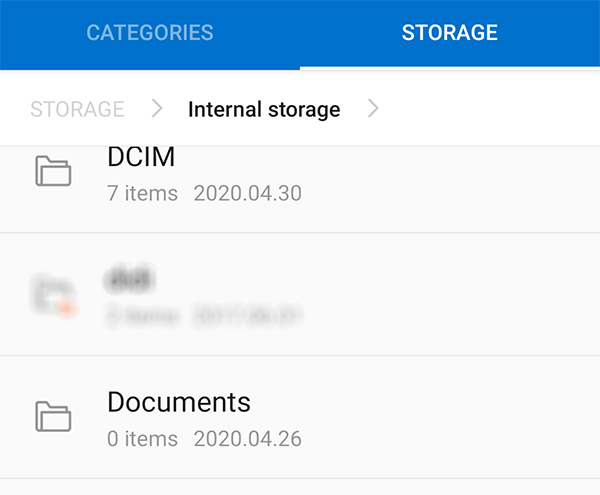Instead, use the values of the DISPLAYNAME and RELATIVEPATH columns. Storage volumes. Apps that target Android 10 or higher can access the unique name that the system assigns to each external storage volume. This naming system helps you efficiently organize and index content, and it gives you control over where new media files are stored. Emulator Info.: Android emulator with Marshmallow(6.0.0) Android 6 API level 23 Expected: Application should get installed in external storage. Actual: Application is getting installed in internal storage. Reproducible: 10/10 All logs and Screenshot are attached with this bug.

- Android Basics
- Android - User Interface
- Android Advanced Concepts
- Android Useful Examples
- Android Useful Resources
- Selected Reading
Android provides many kinds of storage for applications to store their data. These storage places are shared preferences, internal and external storage, SQLite storage, and storage via network connection.
In this chapter we are going to look at the internal storage. Internal storage is the storage of the private data on the device memory.
By default these files are private and are accessed by only your application and get deleted , when user delete your application.
Writing file
In order to use internal storage to write some data in the file, call the openFileOutput() method with the name of the file and the mode. The mode could be private , public e.t.c. Its syntax is given below −
The method openFileOutput() returns an instance of FileOutputStream. So you receive it in the object of FileInputStream. After that you can call write method to write data on the file. Its syntax is given below −
Reading file
In order to read from the file you just created , call the openFileInput() method with the name of the file. It returns an instance of FileInputStream. Its syntax is given below −
After that, you can call read method to read one character at a time from the file and then you can print it. Its syntax is given below −
Apart from the the methods of write and close, there are other methods provided by the FileOutputStream class for better writing files. These methods are listed below −
| Sr.No | Method & description |
|---|---|
| 1 | FileOutputStream(File file, boolean append) This method constructs a new FileOutputStream that writes to file. |
| 2 | getChannel() This method returns a write-only FileChannel that shares its position with this stream |
| 3 | getFD() This method returns the underlying file descriptor |
| 4 | write(byte[] buffer, int byteOffset, int byteCount) This method Writes count bytes from the byte array buffer starting at position offset to this stream |

Apart from the the methods of read and close, there are other methods provided by the FileInputStream class for better reading files. These methods are listed below −
| Sr.No | Method & description |
|---|---|
| 1 | available() This method returns an estimated number of bytes that can be read or skipped without blocking for more input |
| 2 | getChannel() This method returns a read-only FileChannel that shares its position with this stream |
| 3 | getFD() This method returns the underlying file descriptor |
| 4 | read(byte[] buffer, int byteOffset, int byteCount) This method reads at most length bytes from this stream and stores them in the byte array b starting at offset |
Example
Here is an example demonstrating the use of internal storage to store and read files. It creates a basic storage application that allows you to read and write from internal storage.
To experiment with this example, you can run this on an actual device or in an emulator.
| Steps | Description |
|---|---|
| 1 | You will use Android Studio IDE to create an Android application under a package com.example.sairamkrishna.myapplication. |
| 2 | Modify src/MainActivity.java file to add necessary code. |
| 3 | Modify the res/layout/activity_main to add respective XML components |
| 4 | Run the application and choose a running android device and install the application on it and verify the results |
Following is the content of the modified main activity file src/MainActivity.java.
Following is the modified content of the xml res/layout/activity_main.xml.
In the following code abc indicates the logo of tutorialspoint.com
Following is the content of the res/values/string.xml.

Following is the content of AndroidManifest.xml file.
Let's try to run our Storage application we just modified. I assume you had created your AVD while doing environment setup. To run the app from Android studio, open one of your project's activity files and click Run icon from the tool bar. Android studio installs the app on your AVD and starts it and if everything is fine with your set-up and application, it will display following Emulator window −
Android Emulator Internal Storage Path App
Now what you need to do is to enter any text in the field. For example , i have entered some text. Press the save button. The following notification would appear in you AVD −
Now when you press the load button, the application will read the file , and display the data. In case of our, following data would be returned −
Note you can actually view this file by switching to DDMS tab. In DDMS , select file explorer and navigate this path.
Android Emulator Internal Storage Path Online
This has also been shown in the image below.